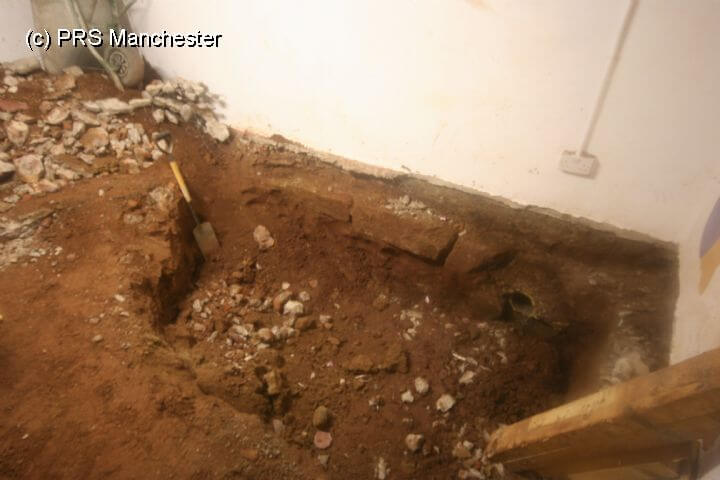Feasibility Study And Estimating
Investigation via trial holes in a basement in Alderley Edge revealed rock below the concrete floor slab. Upon inspection this rock was found to be of a soft sandstone suitable for excavation with small breakers. The rock was also considered suitable for supporting the original walls without underpinning or further support to most of the existing basement walls. This enabled deep excavation below the original basement floor level, giving a substantial increase in head height in the finished basement conversion.
Some internal walls were also removed to give a more open feel to the basement, whilst this extensive operation was time consuming and costly the end result was dramatic.
The size of the basement conversion added value to the building and made the scheme viable to the owners in both an increased living area without altering the property externally whilst adding value of the property.
Structural work
Whilst most of the structure was self supporting following the excavation in some areas underpinning was required to some sections of the basement structural walls. In other areas sheet reinforced concrete walls were installed to stabilise the basement foundations at an economical cost to the project.
Excavation of the Basement
A specialised conveyor was used to remove the large amount of soil and rock created by the basement excavation works. This can be seen resting on the lower excavated level of the basement in the picture opposite.
The white painted sections of the walls can be seen showing the basement floor level before the excavation work commenced. A line of bedrock can be seen below the level of the original floor level showing the extent of the excavation.
A cavity drain membrane was hung around the basement walls to enable any water entering below the external ground level to drain away behind the membrane down below the newly created basement floor level.
A further cavity drain membrane and drainage system to the floor enables water to be moved to the main drains and a sump for removal, this is then covered by a screed as a finished surface. The result is a permanent dry basement. The system with routine maintenance can be effective for the life of the property.


